Grand orange staircase ascends through science faculty by Saucier + Perrotte
An orange staircase zigzags back and forth across the atrium of this science faculty building that Canadian firm Saucier + Perrotte Architectes has completed for a Quebec college (+ slideshow).
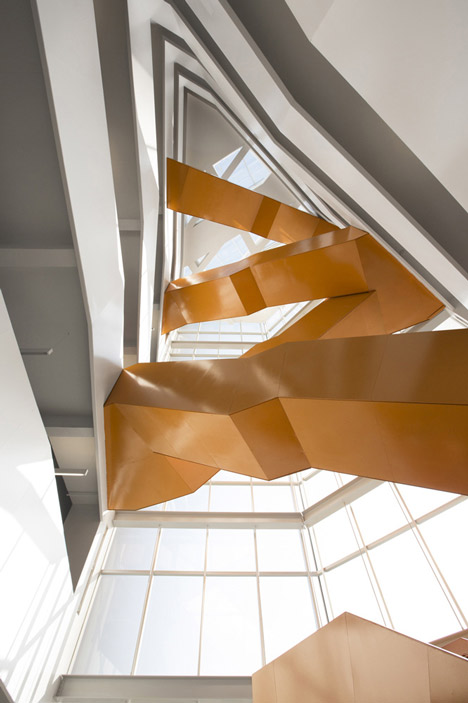
The angular staircase connects all six storeys of the Anne-Marie Edward Science Building, which was designed by Saucier + Perrotte Architectes at the heart of the John Abbott College campus near Montreal.
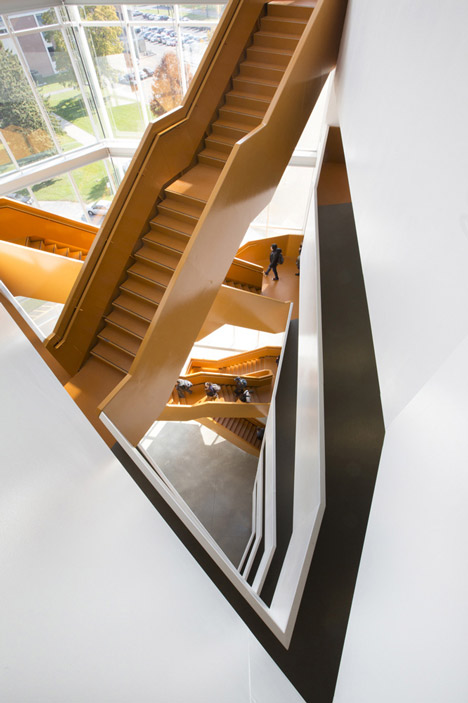
The building has a folded form that angles around an existing ginkgo tree. The main entrance is positioned inside the fold, while a diamond-shaped space at the rear accommodates the atrium and staircase.
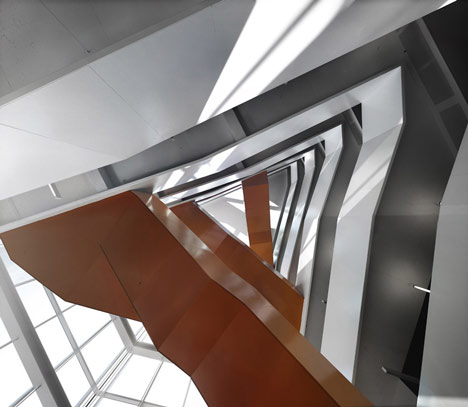
The architects compare the staircase with the gingko, describing it as an "architectonic tree" that connects the departments of each floor, comprising physics, biology, chemistry, nursing, prehospital emergency care and biopharmaceuticals.
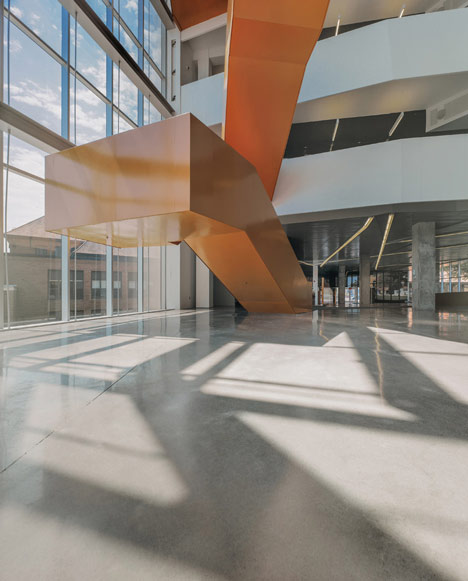
"The landscape flows into the foyer, becoming an interior topography, which transforms at the fulcrum of the building into a light-filled, vertical circulation space connecting the sciences," they said.
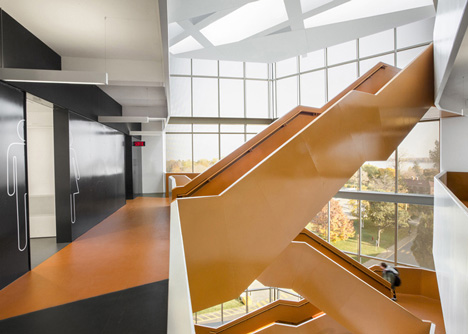
The vibrant orange provides the only colour in an otherwise monochrome interior. Ground-floor seating areas are finished in the same colour, while a weathered steel facade at the northern end of the building echoes similar tones.
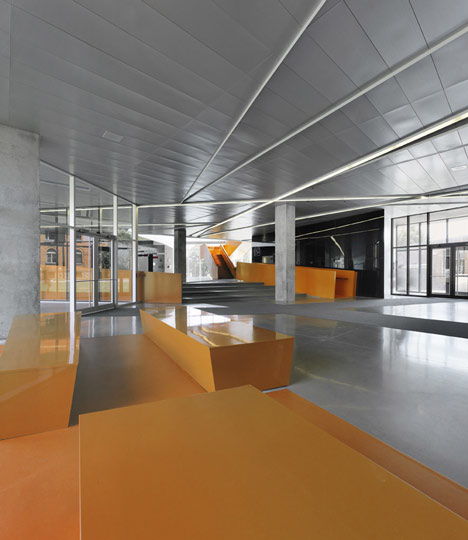
"The grand staircase and seating elements comprising the interior 'tree' weave these orange hues throughout the building, just as the weathered steel of the north facade and the ruddy masonry courtyard surfaces relate back to the historic campus tiles and brick," said the architects.
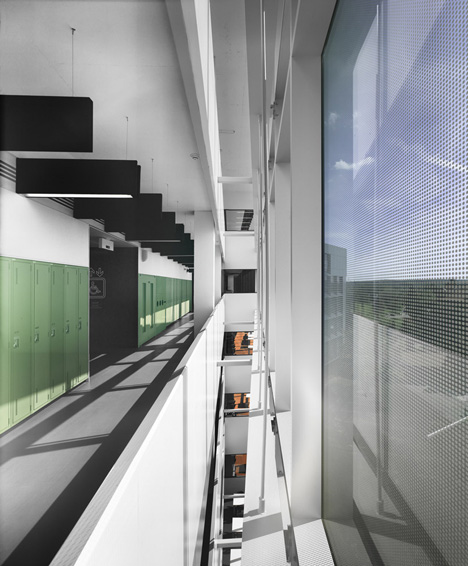
Other facades are glazed with varying transparency, revealing the staircase to the rest of the campus whilst maintaining the privacy of the laboratories.
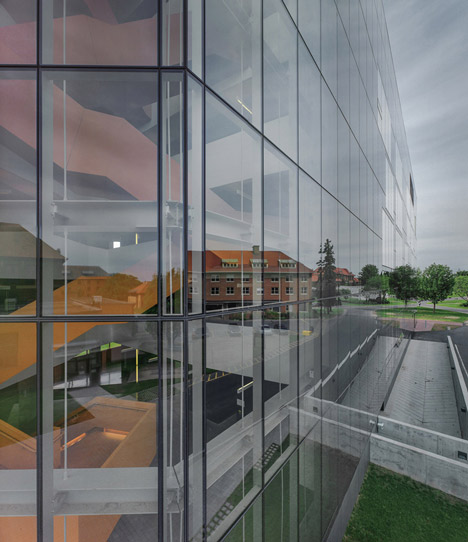
Here's a more comprehensive description of the building from Saucier + Perrotte Architectes:
Anne-Marie Edward Science Building at John Abbott College
Located on a campus designed along Lac St-Louis in the first decade of the twentieth century, John Abbott College is home to more than 5000 post-secondary students, faculty and staff members. Its new Science Building, designed by Saucier + Perrotte Architectes, is a state-of-the-art facility intended to foster the interdisciplinary nature of science, collaborative study and experiments, and the need for formal and informal learning. Designed as a showcase for sustainability, the singular, iconic form promotes a variety of pedagogical approaches through flexible classrooms, laboratories, learning centres, and informal spaces where ideas can be exchanged and creative interaction can unfold.
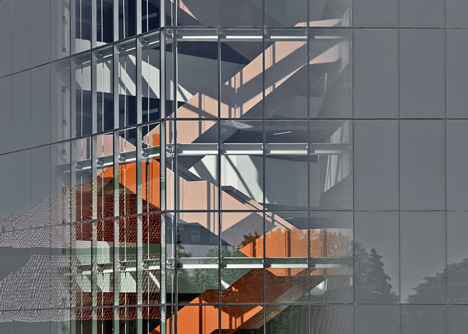
The new building houses the College's sciences - Physics, Biology, Chemistry, Nursing, Prehospital Emergency Care, (Paramedic), and Biopharmaceutical departments - positioning the sciences and health technologies at the heart of the John Abbott campus. Sited carefully to preserve the logic of the radial organisation that drove the initial campus planning, the new architecture becomes a node of activity on the campus.
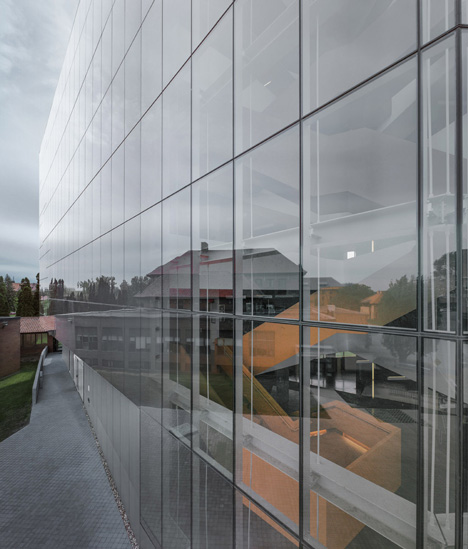
The architecture stems from the landscape, taking cues from its context. On the site is a majestic gingko tree that was envisioned as a centrepiece for a beautiful, collegial, outdoor gathering space. The building's form first extends from the campus centre, then folds to frame a public courtyard around this tree. The landscape flows into the foyer, becoming an interior topography, which transforms at the fulcrum of the building into a light-filled, vertical circulation space connecting the sciences. An architectonic tree, analogous to that of the adjacent gingko, this atrium space contains the grand staircase and branches that extend through the building as built-in way-finding elements and benches. The vertical link thus becomes a public interior garden, emphasising the connection between the natural environment and the type of learning that takes place within the building.
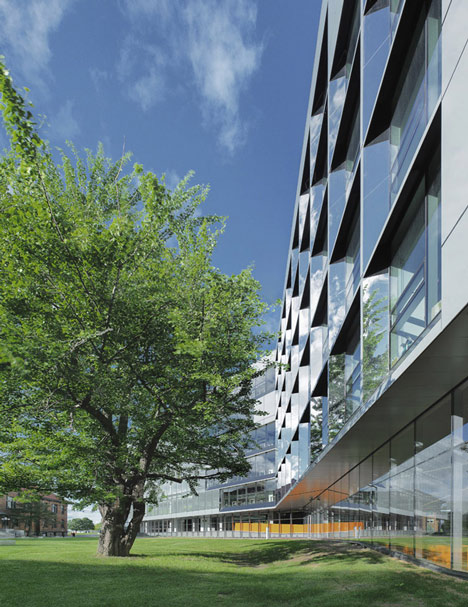
The permeable ground floor of the building permits the landscape and users to flow into and through it with ease. The project thereby functions as a hub and a passage to various parts of campus. The volume above frames views to the lake, landscape, and the town of Ste-Anne-de-Bellevue. Together with the labs and student spaces along the east and west facades, the learning centres situated along the south facade - directed toward the centre of campus - give students a feeling of inhabiting a virtual balcony overlooking the verdure and lake below.
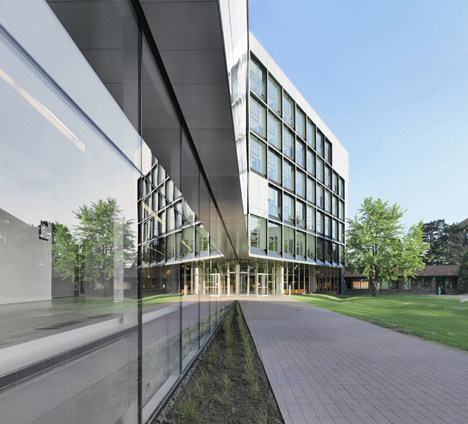
The building is composed of a glass material palette - vividly reflecting the sky, landscape, and adjacent historic buildings - its angled surfaces giving new, unexpected perspectives toward various parts of the campus. Each of the long facades is predominantly composed of a single glass tone of opalescent white, light grey, or dark grey. The result is a subtle, perceptual play between the hues of the juxtaposed facades, especially as the sunlight changes throughout the day or depending where one is standing in relation to the building. The slight shifts in glass tones add to a heightened perception of the architecture; under varying lighting and shadow conditions, for instance, the facade contrasts may be accentuated or, conversely, take on a uniform tonal appearance that would be impossible if the surfaces had been the same hue.
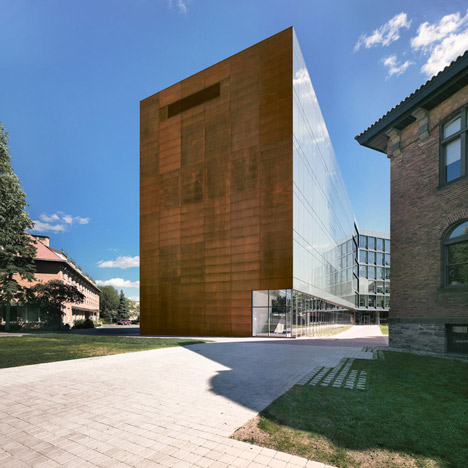
In certain circulation zones, the building skin gradually changes from translucent to transparent, allowing the building to be perceived as continuously changing - even dematerialising - within the campus. Programmatic functions (offices, learning centres and laboratories) are given clear expression as they come into contact with the building skin so that those outside can readily identify the functions showcasing the sciences. The north and south facades of the pristine glazed form appear suddenly sliced or truncated, given over to the elements, and weathered so as to evoke the colours and textures found throughout the college. The grand staircase and seating elements comprising the interior "tree" also weave these orange hues throughout the building, just as the weathered steel of the north facade and the ruddy masonry courtyard surfaces relate back to the historic campus tiles and brick. Through its dialectic with the existing architecture, the new project is both contemporary in form and harmonious with the historic campus.
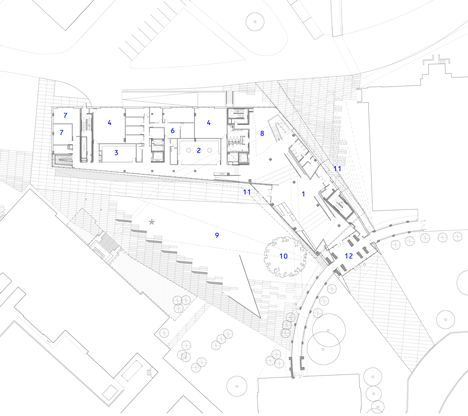
Main floor levels contain individual departments to preserve continuity between professors, classrooms and laboratories for each science, favouring work, study and quiet contemplation. The central atrium space allows easy access to other levels, fostering connection, communication, and sense of community between disciplines. Movement converges at this central node of the building, which becomes an active zone throughout the day, allowing for spontaneous exchange of ideas. Exhibitions and activities take place in the foyer, permitting students and visitors to derive benefits and inspiration from cross-disciplinary ideas.
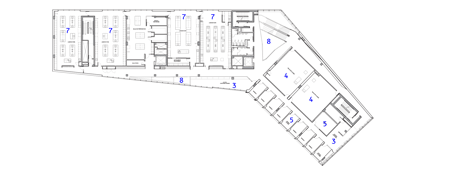
The building has been conceived with the welfare of its occupants in mind (it is currently targeting LEED Gold certification). The first priority was to provide an environment that supports active and engaged learners and nourishes enthusiasm for life-long learning. To contribute to the healthiest environment possible, important factors such as indoor air quality and levels of noise are controlled. Natural light and natural ventilation play a vital role in the life of the building, being present throughout. Furthermore, as the building privileges views outward, occupants will remain in contact with the exterior campus landscape. The central atrium space allows natural air circulation as well as the exhausting of air at the roof level. Operable and user controlled office windows also promote a healthful environment. The building takes advantage of geothermal energy - one of its signature features - to provide heating and cooling for the building, thereby reducing energy consumption, and therefore cost, over the long term.